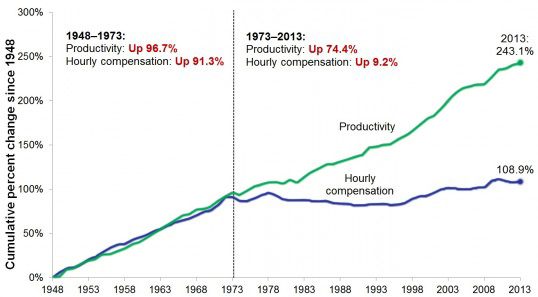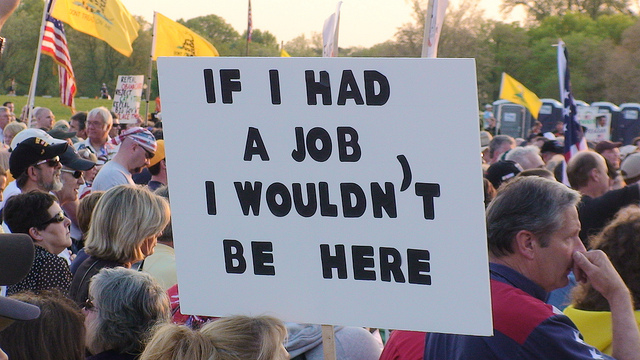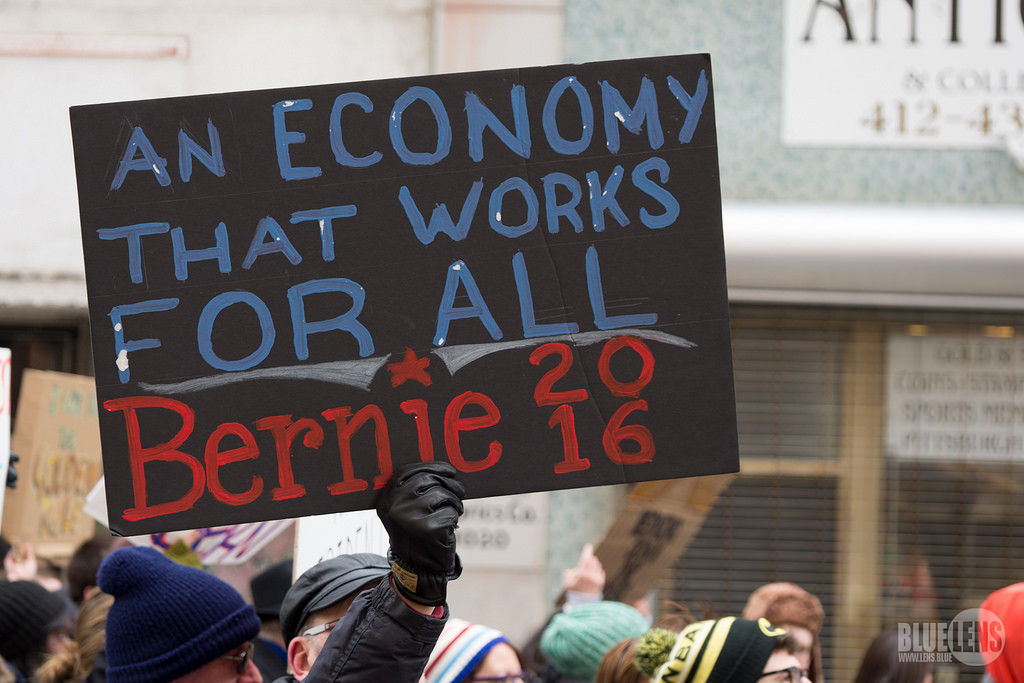Campaign 2016 – The Rise of Wedge Economics
Washington – Given Donald Trump’s gutter politics – his foul mouth, his racist bigotry, his dark nativism, you have to ask yourself, “How does he keep winning?” and “Why does he so alarm the Republican Establishment?” And the answer lies not so much in personality politics, but in something more explosive: Trump’s heresy against orthodox Republican economics.
When you see a panicky GOP elite hurriedly pouring millions into SuperPACs with Loftier-than-Thou titles like Our Principles to try to dump Trump in Florida, Ohio and other big states, it’s a pretty good bet that the Republican establishment is alarmed by more than Trump’s vulgar hucksterism. They are out to kill not just the messenger, but the message, too. And there’s the rub
The reason that Trump is so hard to deflate, defeat or derail – and Bernie Sanders on the Democratic side as well – is that both candidates, whatever their downsides, have tapped into what’s really churning in the belly of the American electorate this year: A volcanic anger among middle class voters over being cut out of their fair share of America’s economic growth. The nation’s entire payroll is at its lowest share of national income in six decades; corporate profits, the highest share.
Wedge Economics Creates Two Americas
Wedge economics – that’s the gut issue: A Wall Street-driven brand of capitalism that has created a hyper-concentration of wealth and power in America and split our society in two – two Americas that no longer feel linked to a shared destiny.

Wedge Economics: How the middle class got left out.Source:Economic Policy Institute
The wedge between the nation’s economic growth and middle class pay and standard of living first appeared in the late 1970s and that wedge has been growing wider ever since. Growth and productivity have risen dramatically over 40 years, but hourly wages have been stagnant for the average worker. While incomes soar for the 1%, much of the middle class has fallen behind. Median household income is lower today than in 1999.
In six years of recovery, the U.S. economy has added 14 million new jobs but those new jobs don’t pay as well as the jobs we lost. In recovery, the good-paying blue collar sectors of manufacturing and construction have lagged behind the lower-paying retail and service sectors. Foreign trade has mangled our manufacturing. According to a new economic estimate, foreign trade with the Pacific Rim region cost the U.S. two million jobs in 2015 and millions more in previous years.
Against that backdrop, what Trump has exposed is that rank and file Republicans have lost faith in Republican trickle-down economics. As political champion of the blue-collar crowd, Trump gains their trust when he tells them he can’t be bought by Wall Street or corporate CEOs because he can fund his own campaign.
Not Left Vs. Right, but Bottom vs Top
In short, Campaign 2016 has moved beyond the old Left-Right paradigm. As the passionate crowds that flock to Trump and Sanders rallies testify, the new norm is Bottom-Up, a mutiny against the Economic Divide, picking up from Occupy Wall Street and the early Tea Party. It’s populism vs elitism, the 99% vs the 1%, Joe Sixpack vs Corporate Royalty.

image (CC)NObama NoMas
On the core economic grievances, Trump speaks for Just Plain Joes when he condemns foreign trade pacts promoted by Corporate America and lashes out against U.S. multi-national companies for moving overseas to duck U.S. taxes. It resonates with his followers when he declares: “We’re being killed on trade, absolutely destroyed. We have got to stop it, folks. I know how to stop it. We’re going to create jobs.”
Clashing with the Republican leadership in Congress, Trump vows to protect Social Security and Medicare to “honor a deal” made with middle class Americans. At his Florida resorts, Trump hypocritically hires low-wage foreign workers, but he gives voice to the raw economic fear of the rank-and-file on immigration. “An influx of foreign workers,” he asserts, “holds down salaries, keeps unemployment high and makes it difficult for poor and working-class Americans.”
Sanders’ Prairie Fire among Democrats
On the Democratic side, Bernie Sanders, an unlikely 74-year-old, self-proclaimed democratic socialist, has lit a prairie fire across the country with his call for a political rebellion against wedge economics and the overweening wealth and power of the moneyed elite.
Of course, Sanders and Trump are radically different candidates with different track records and agendas. Yet Sanders, like Trump, has savaged job losses caused by trade deals made by Democratic as well as Republican presidents. Like Trump, he wins credibility for his independence from political Mega Donors, while he relentlessly scolds Hillary Clinton for her ties to Wall Street for Super-PAC donations and super-sized lecture fees.

image (CC)Mark Dixon
When Hillary Clinton tried to rebut Sanders and damn him as a narrow one-issue candidate in their debate at Flint, Michigan, Sanders won a roar of applause when he snapped back: “Well, I guess so. My one issue is trying to rebuild a disappearing middle class.”
And like Trump, Sanders has not only defied every media prediction about the futility of his cause, but he inspires a seemingly unending river of small donations by promising the populist dream of a fairer, more generous America of shared prosperity. And he hints that firing up a political rebellion is more important to him than winning the nomination.
Clinton Buys into Sanders but GOP rejects Trump
On that score, Sanders has succeeded better than Trump. He has steadily moved Hillary Clinton to incorporate more and more of his platform against the lopsided inequalities of the 21st Century America. Lately, she has promised to levy exit taxes and clawback clauses against American companies that flee overseas. She has come out against the new Pacific Rim trade pact. She has pledged a massive effort to modernize America’s aging infrastructure and other programs to generate good-paying middle class jobs. She has joined Sanders in advocating political campaign reforms.
By contrast, Trump’s Republican rivals have clung to the trickle-down economics of Corporate America. None has made a serious attempt to capture Trump’s mass base by grabbing some of his political pitch on behalf of the Have-Nots against the Have-A-Lots.
What’s more, with widespread alienation among the Republican rank-and-file, the GOP elite’s effort to excommunicate Trump may backfire. It may not only wind up splitting the Republican Party, as pundits now suggest, but it may further stoke the fires of class conflict within the Republican Party, because grass roots rancor over wedge economics is not about to disappear anytime soon.
 Hedrick Smith, who conceived this website and is its principal writer and architect, is a Pulitzer Prize-winning former New York Times reporter and Emmy award-winning documentary producer for PBS and PBS FRONTLINE.
Hedrick Smith, who conceived this website and is its principal writer and architect, is a Pulitzer Prize-winning former New York Times reporter and Emmy award-winning documentary producer for PBS and PBS FRONTLINE. 


